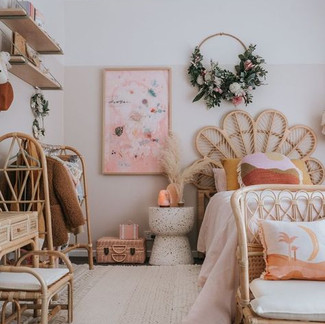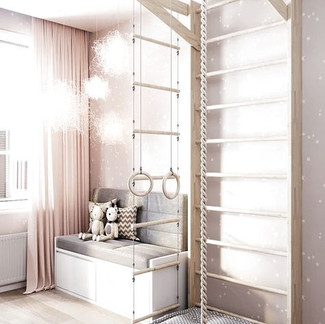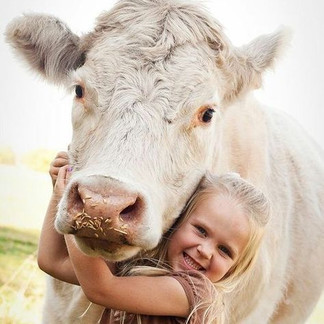#moondaymood: HAPPY BIRTHDAY! 🥳
- Laura Antoni

- Jun 1, 2020
- 4 min read

The first five – and especially the first three years – of a child’s life are the most important. They shape the brain’s organisation, development, and functioning throughout life. There are things you can do right now to amplify it, and it all starts in the child’s bedroom & nursery.
From the moment they are born, babies are constantly absorbing information around them in which visual stimuli is an essential part to this process. A baby’s retina may not be fully formed at birth, but, from the moment they open their eyes their brain begins to absorb this information like a sponge. According to Dr Amanda Gummer, an authority on the likes of child development, play and parenting, 80% of the information their brain receives at this early age comes from their vision. This puts a high emphasis on visual stimulation.

“Surround a baby with soft pastel colours, and you might as well be blindfolding him,” says renowned paediatrician Dr. William Sear
One of the most stimulating contrasts in is fact black and white. It was found that babies looked twice as long at the patterned black and white pictures as they did to solid-coloured ones. This is because these high contrasts register powerfully on a baby’s retina and send the strongest visual signals to the brain – stronger signals mean more brain growth and faster development.
“Researchers have repeatedly shown that newborns prefer to look at black and white geometric shapes, rather than bright colours or pastels.”
“There is much evidence [however] that infants thrive in an atmosphere with bolder colours and striking designs. You can constantly hit a satisfied equilibrium by painting the room in the colours you like and then adding a wall border, mural or some pictures which include black and white designs or strong geometrics that are pleasing and stimulating to the baby”
By just adding a few simple pieces of art to the wall, your nursery can have a blank canvas transformed into a stimulating learning environment, full of exploration.Vinyl decals are a great and safe way to decorate your nursery. Unlike wall hangings, there’s no risk of anything falling on the crib and you can truly transform a room. Whether it’s a jungle scene, owls in trees or a sunken pirate ship, a vinyl sticker can say so much more than a hung picture.

Make it cozy. Kids love to cuddle, so fill your child's room with items she can use to self-soothe, like a large stuffed animal or body pillow to lounge on, or a soft blanket with enough weight to feel like a hug. Bedding, pillows, and rugs should be soft to the touch, of course, so "test-drive" all materials before bringing them into the room.
Natural, simple, pared back. It’s a decorating style that’s catching on as an antidote to our super-busy lives and one that’s made for the nursery. If you want to create a nursery with a sense of calm for baby, keep it simple with a range of natural materials.
Nursery furniture and decor items crafted from wood, wool, and rattan are all widely available in the shops. When mixed with a neutral colour pallet of whites, browns and soft greys it creates a wonderfully calming space, perfect for settling tired little bubs.
Bring the outside in. "Using and designing around natural elements sends a subliminal message to the brain to feel calm," Feder says. "The colours, sights, sounds, scents, and textures found in nature present the most perfect balance and are the greatest source of inspiration for all my schemes."
One way to bring nature inside is to incorporate images of the outdoors into your child's bedroom. "Especially when working with children, wall art should be photography over paintings," Feder says. "Photos help children learn how to observe details around them and they learn how to appreciate everything nature does for us as a whole. Photos can also double as lovely views when windows with lovely vistas aren't available."
Encourage creativity. Last but not least, I think from all, this should be the most important and the best thing that you can do for your kid. Einstein said, "Imagination is more important than knowledge." Imagination is the door to possibilities. It is where creativity, ingenuity, and thinking outside the box begin for child development. Imaginative and creative play is how children learn about the world. During imaginative play, children manipulate materials, express themselves verbally and non-verbally, plan (intentionally or unintentionally), act, interact, react, and try different roles.
Emotional Development: Creative play promotes social and emotional development by integrating feelings with tasks. Ask your child to paint, draw, or tell a story, about how they’re feeling. These types of activities help children, who are not able to verbalise, express their feelings. In time, children will learn how to express their feelings safely and creatively, allowing them to integrate into social settings and regulate their behaviour more appropriately.
Social Development: Children can grow and increase their social development when given opportunities to play and interact with peers. Singing, dancing, dress-up, and other forms of imaginative play are a few areas where children are able to grow and develop basic communication and social interaction skills.
Intellectual Development: Through creative play, children can learn important problem-solving skills. Reading, for example, gives children the opportunity to express their imaginations and explore a world outside of their own, helping to improve both intellectual and cognitive skills. This also forms the basis of reading comprehension and retention and sets the tone for solving more complex problems as they grow and develop.
Physical Development: Whether your children are dancing to the rhythm of their own beat, or exploring the great outdoors, creative play helps to grow gross and fine motor skills, coordination, and control. Building fine motor skills requires practice and sets the stage for improving hand eye coordination and muscle memory.


SOURCES:




































































































































































































































































































































Comments